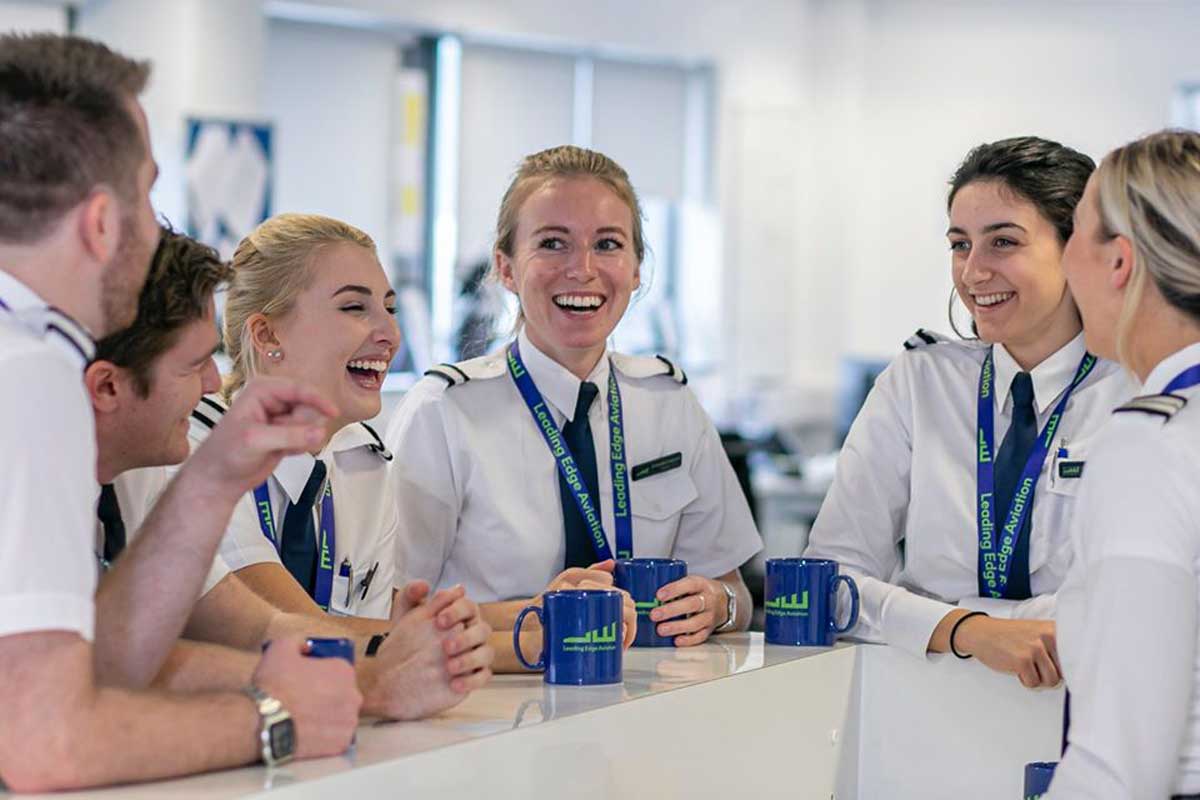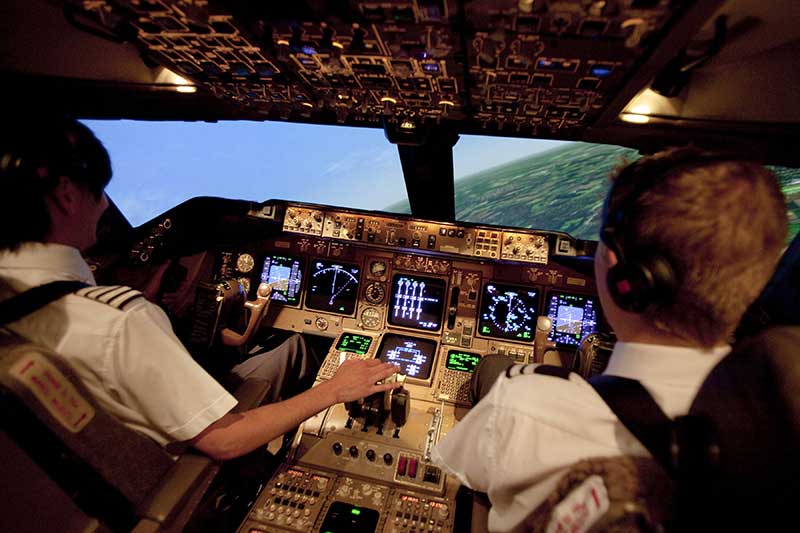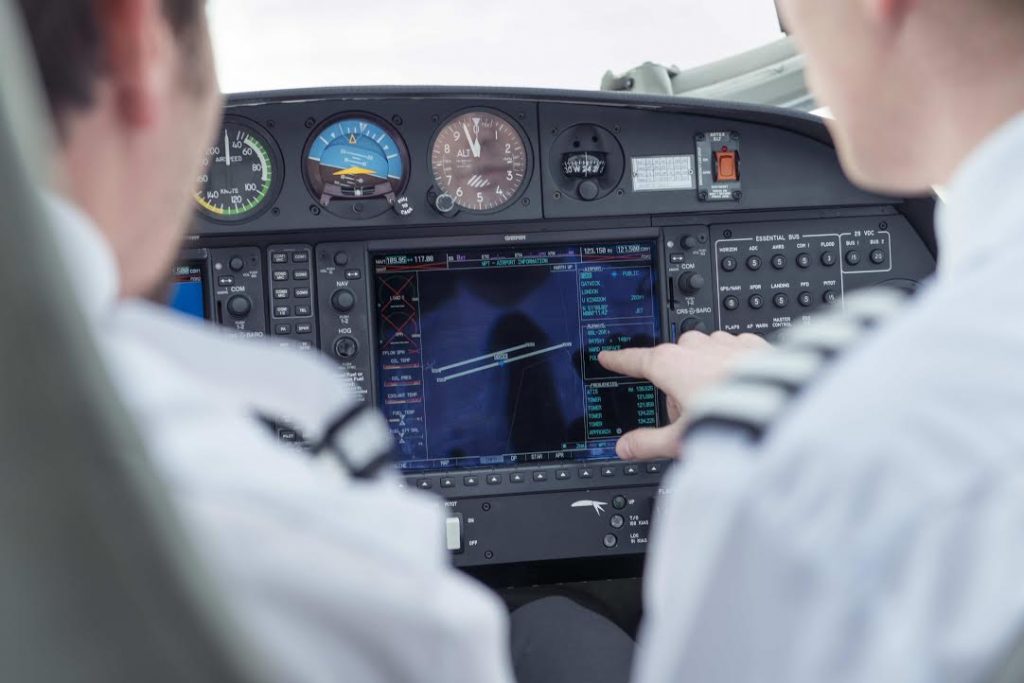
Photo: Leading Edge Aviation
So you want to be an airline pilot – congratulations on taking the first step in what is to be a challenging, sometimes tough path to a rewarding career. The first thing is to get a Class 1 medical. With that in the bag, there are two main training routes: the integrated route and the less financially-draining but equally professional and rewarding modular route. There’s also the increasingly popular MPL (Multi-Crew Pilot Licence), which we will address in a future article.
The integrated route
The integrated route involves a full-time course of study, generally lasting around 14-18 months. This takes a student from complete beginner to a position where they are ready to take up a role as a pilot ready to work for the airlines. The main advantage is that a student enters an intense course of study within a dedicated and well-equipped training facility, surrounded by like-minded students and often with links to leading airlines. What’s more, if your goal is to take your first flying role with British Airways, this airline will only employ low-hour graduates straight from selected ATOs (Approved Training Organisations) who have come through the integrated route. (Having said that, BA will consider all suitably qualified pilots, from either the modular or integrated routes, once they have gained suitable experience with another airline.)
Being a full-time student means your progress can be monitored at each stage of training, giving you every opportunity to make the most of your investment. Should you fail your ground exams and flight tests during your training (and this is exactly the same whether you’ve chosen the integrated or modular routes) while the chance does exist to retake them, airlines do look more favourably on graduates who have passed first time and with top marks. So it really is worth getting your head down, working hard and accepting all and whatever help and advice is available.
While many of these aspects of your training are completed as part of a curriculum that has been set by the CAA, it’s the specific character, location, cost and presentation of each FTO that will help you decide which is the best suited for you.
The training itself can be split into specific modules, which typically run like this:
The ATPL ground exams – for many, the most demanding part of the training. You’ll need to pass 14 exams covering subjects such as navigation, flight planning and aviation law.
Flight training – the fun bit. A majority of this may well take place overseas, often in the USA, which offers cheaper flying and better weather.
Night Qualification – your first additional qualification, allowing you to fly, as you would expect, at night.
Commercial Pilots Licence – the CPL is a basic requirement to be allowed to fly for financial reward. This is a major stepping stone towards a career in the airlines. You need a minimum of 150 hours of flight time to get this far, with flying more complex aircraft with retractable undercarriage and variable-pitch propellers.
Multi-engine rating
Instrument Rating – the most demanding of the flying skills, flying solely with reference to the aeroplane’s instruments.
Multi-Crew Co-operation – learning to work as a team, a requisite for the majority of professional pilots.
With all of this successfully completed, you’ll have what is known as a frozen ATPL. The ‘frozen’ part refers to the fact that you’ve passed the required theory part of the Airline Transport Pilots Licence; to ‘unfreeze’ it you’ll need to have a total of 1,500 hours flying time logged. You’ll also need a type rating, basically the result of a course of training undertaken that is individual to each type of aircraft, e.g. a Boeing 737-400. At the present time, particularly when applying for a first job with many airlines, you might well have to pay for your own type rating, at a cost of between £20,000 and £30,000. However, as your experience increases, you can generally expect future type ratings to be paid for by your employers.

Whichever route you take, at some point you’ll need some simulator time
The modular route
With banks no longer keen to lend unsecured loans, and pilot training grants very difficult to come by, the modular training route is increasingly popular. As Jonathan Candelon, Director at FTA Global, explains, “There’s a great demand for affordable flight training options coupled with high quality. This can only truly be achieved with the structured modular route, which is something that we are able to deliver for less than half of the cost of an integrated course and within the same timeframe.”
The modular route refers to training at an equally high standard to that offered on an integrated course. What’s more, just like ATOs offering the integrated routes, a number of modular training establishments have strong links with leading airlines. The big difference is that the study doesn’t necessarily take place as a full-time study option or over a set period of time. Instead it can be done at the student’s own pace, module by module, as time and money allow.
“The modular method of pilot training has many advantages over integrated courses,” explains Nick Dunn, Operations Director at Aeros. “Most importantly, the cost is substantially less than a fully integrated course, the difference often being more than enough to fund a type rating, which many airlines are now expecting prospective employees to pay for themselves. Furthermore, because you can train in ‘blocks’, the cost can be spread over a longer period, or you can return to work between modules. However, many students choose to complete the modules consecutively, completing all their training in the same time span, if not less, than an integrated course. As well as this, the pace of training can be tailored to meet your own personal circumstances.”
What’s more, an increasing number of airlines are recognising the benefits that employing graduates from the modular delivers. For example, Flybe’s Director of Flight Operations, Captain Ian Baston explained, “Modular courses tend to produce pilots who have come from a wide background and experience and this can be very advantageous when we come to look at suitability for command in the future. We do require that the professional flying aspect of a modular course is undertaken at a maximum of two different ATOs in order to ensure a degree of continuity and enable the ATO to give us reasonable feedback on an individual’s performance, progress and character. This does mean that any PPL training, ground school examinations or MCC/JOC can be carried out at other ATOs.”
When choosing a modular route, a student might typically choose to complete a module and then take some time out to go back to work and earn enough money in order to start the next module. Alternatively, they might combine a job during the day with their pilot studies at weekends and in the evenings.
This does create its own challenges. It can obviously take much longer to complete the training and the extra workload of holding down a job while also studying can be extremely demanding. Without the support of a strict timetable and being among tutors and other students, motivation can also be difficult to maintain.
However, as Colin Dobney, Head of Training at Stapleford Flight Centre explains, most modular ATOs have the experience to identify the challenges encountered by this type of training and can act accordingly. “We work with the students to schedule their training so that they can make the most of the time available. Also, when they’re nearing the completion of each module, we recommend that they come in for a full week and we help them to be as fully prepared as possible for the flight tests and exams.”

What next?
Remember, always visit any schools in person. All of the reputable schools will be happy for you to tour their facilities, either on an Open Day or sometimes through a prearranged appointment. Find out as much as you can about your chosen ATO, do your research on the career and have realistic expectations. Ask key questions about the success rates of the trainer and remember the golden rule: if it looks too good to be true, it probably is. For more advice, see our article on Safeguarding your Investment.
A great source of impartial advice and is Pilot Careers Live, which brings together Approved Training Organisations, airlines, Universities and Armed Forces from all over Europe, to answer all the questions you have about a pilot career. Find out more about the next event near you at pilotcareernews.com/live
